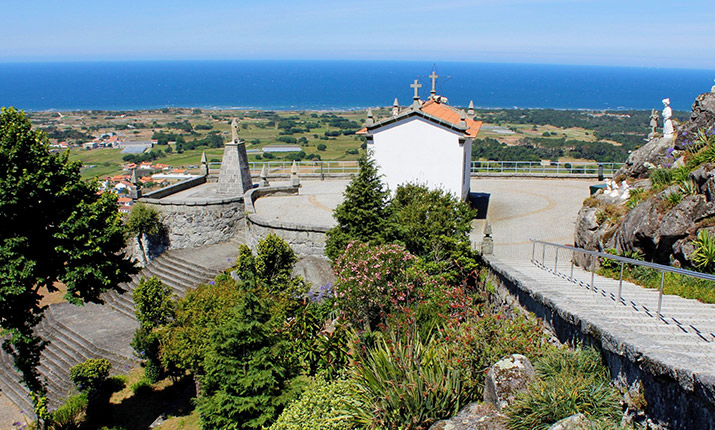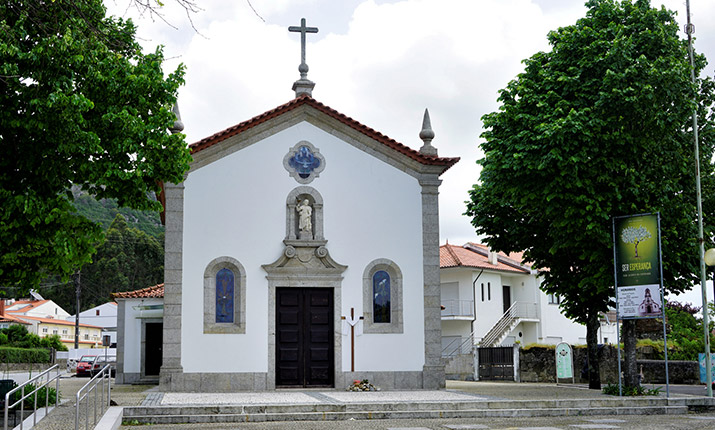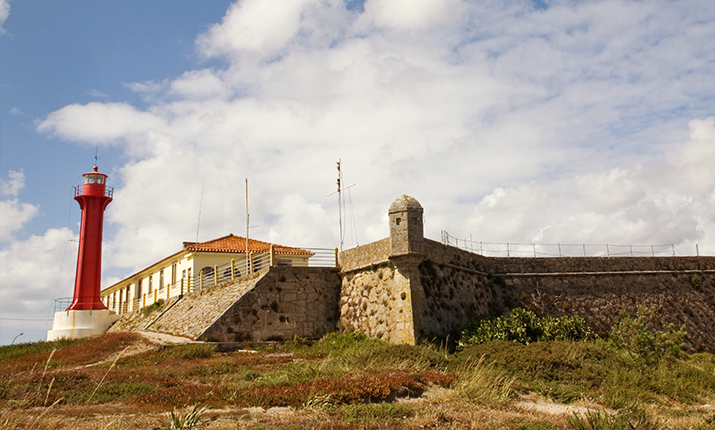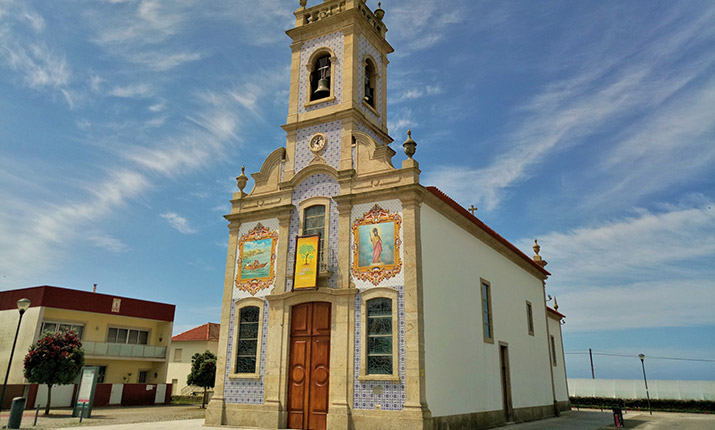
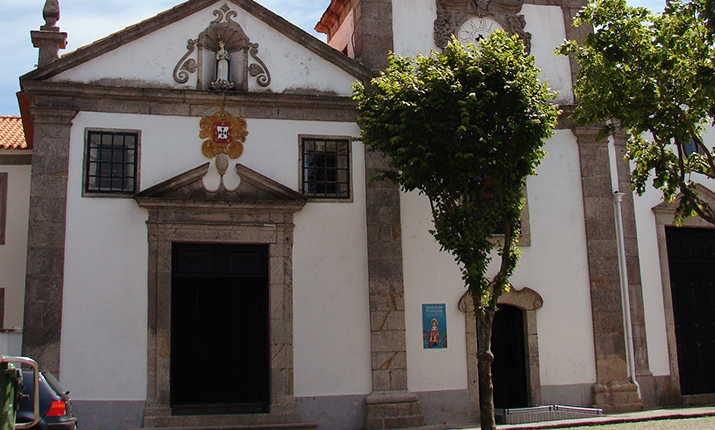
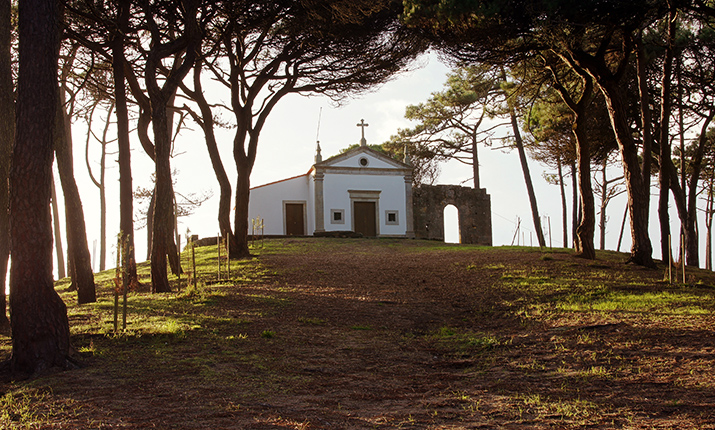
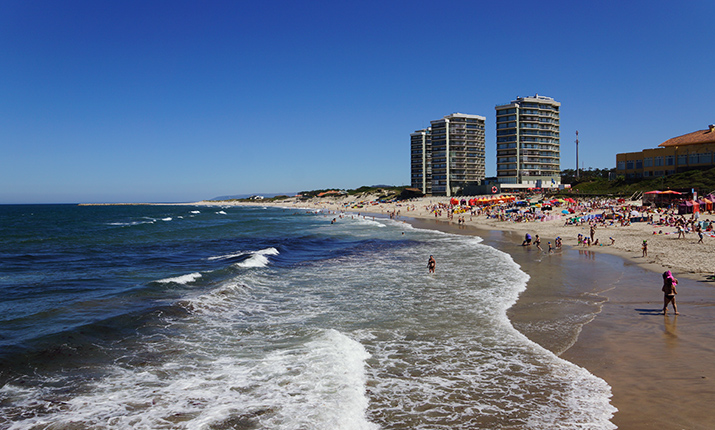
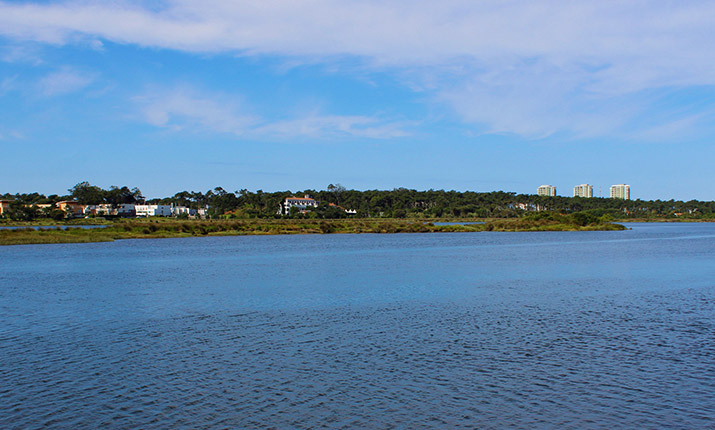
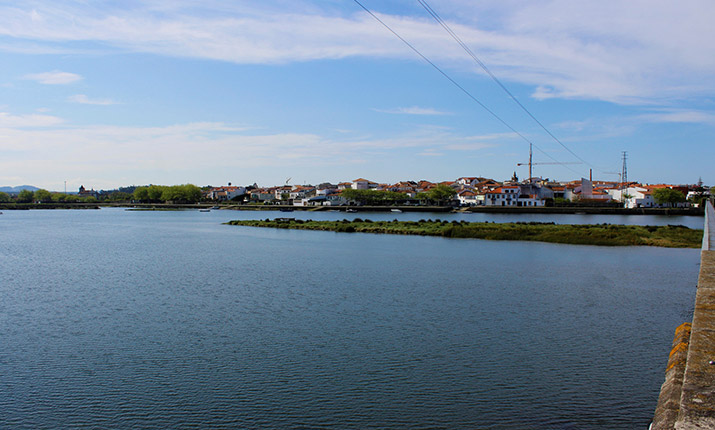
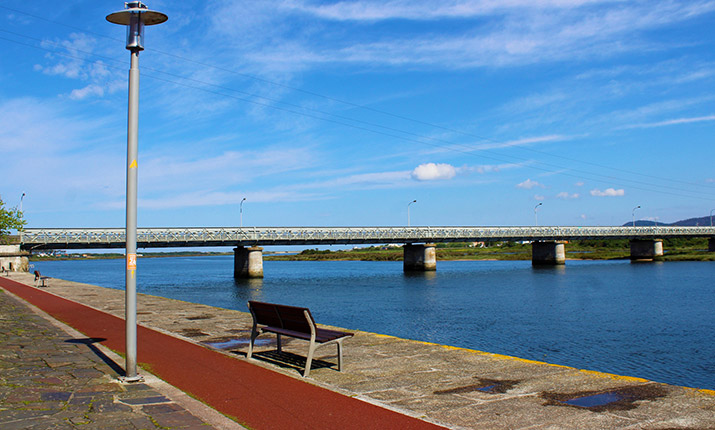


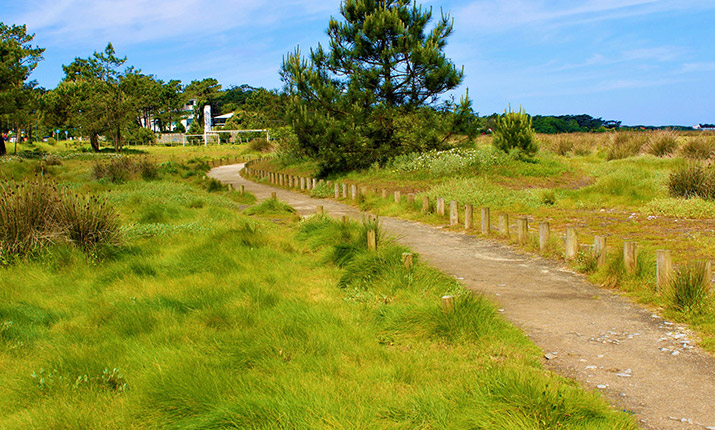
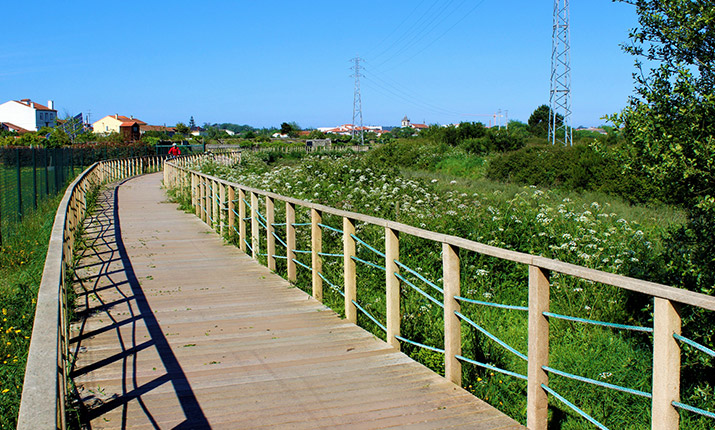
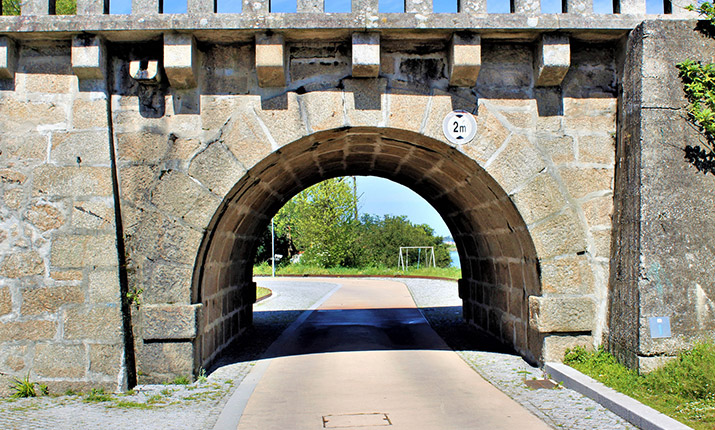

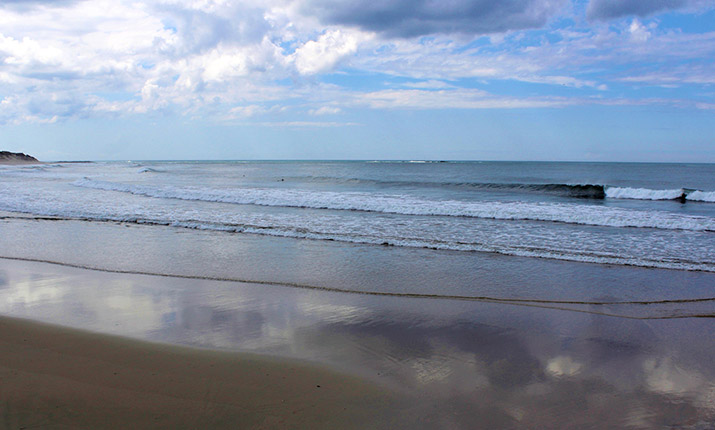
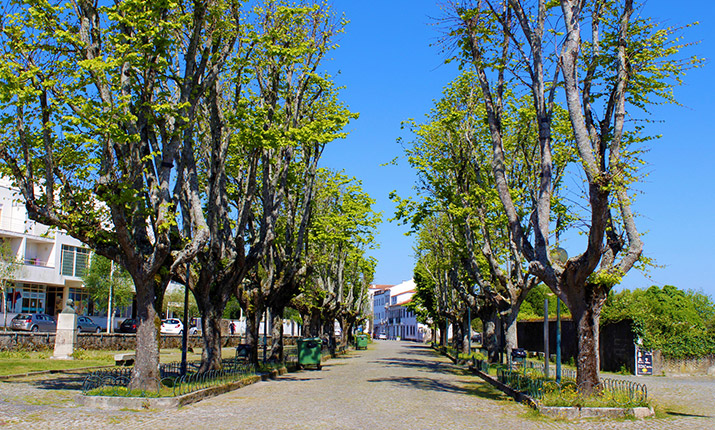
Fão
In Fão, a salt production centre in the Middle Ages, we especially highlight its historic nucleus.
In the ancient urban structure of Fão, on the left bank of Cávado River, when we ramble its streets we can easily see the great influence of Brazilian culture in the early 20th century through the Brazilian taste of the rich returned emigrants that commissioned remarkable residences. These marks are evident, for example, in the current Cortinhal Square, in the impressive residence of Pinto de Campos, Commander of the Merchant Navy, as well as in the Southern end of Bom Jesus Avenue. It is here that Francisco de Campos Morais, founder of Campos Morais & C.A in the city of Rio Grande do Sul, establishes his “Manor House”, recreating a typical Brazilian environment.
So, let us begin our journey through Bom Jesus Avenue. On the south end, it is worth seeking the Church of Bom Jesus de Fão, a building of the early 18th century, as shown by its style, typical of the pilgrimage sanctuaries. It is a perfect day for a mild stroll through the gardens. The main facade is oriented towards the north, while on the south side there is a tower furnished with gargoyles and crowned with pinnacles. Above the main door, there is a broken pediment, surmounted by an elliptical rose window. This temple was cherished and enjoyed by the Portuguese royal arms. The interior is in the form of a Latin cross with stone vaults and tiled walls. The figure of Senhor dos Passos ( Our Lord of The Stations of the Cross), locally referred to as “Senhor de Fão”, is placed on the chancel. Every year, at the weekend following Easter, the population of Fão is responsible for promoting a secular and grand pilgrimage in honor of their patron. According to tradition, a woman found an image of Jesus Christ buried in a quagmire on the left bank of Cávado River. This image became the motto for the construction of the current temple and organization of this pilgrimage, which dates to the 16th century.
The wonderfull carpet made of flower petals is worthy of note -a true “painted canvas” – symbol of the people of Fãos’s greatness, and their contribution and dedication to the miraculous Bom Jesus, their Bom Jesus de Fão.
Not far from this Avenue, opposite the national road EN13, along with the western end of the Parish Cemetery, we will find the Chapel of Santo António da Fonte with its facade facing north, and dating back to the second half of the 17th century.
In a niche, we will see the image of Santo António ( Saint Anthony of Padua) in painted stone, under a coat of arms. The facade of the cape is finished off by a triangular pediment, bearing a stone cross. Along the western facade, there is a bathing fountain. To access the fountain we have to descend the seven steps that were assembled in 1850. The fountain is under a full arch, on top of which an inscription can still be read: 1684 – probably the date of its construction.
According to tradition ( which has begun to fade in people’s memories), lovers would throw a pebble towards the hole that serves as a front piece of the fountain. This place was not intended for a lovers meeting, under the protection of St. Anthony of Padua (known as the marriage saint). The fountains were there to provide water for the daily routine, although they became a meeting point for couples. The ritual of throwing the pebble was to indicate the term and success of the marriage.
Returning to Bom Jesus Avenue and moving towards north through Dr. Henrique Barros Lima Avenue, we find the Chapel of Nossa Senhora de Fátima, near the Fãozense Club. It is a small baroque temple from mid- 18th century ( once dedicated to Nossa Senhora da Lapa) that belonged to the Manor House of Carneiros.
The Baroque motifs are evident in the frames adorning the front door and the rose window, which illuminates the interior. It culminates in a reverse curved pediment with two side pinnacles, flanking a trilobate stone cross. It currently has an exterior tiled Wall with plant motifs in blue and white.
Inside, there is a Baroque gilded woodcarving altar. On the ground, we will find the grave of the owner of the neighboring emblazoned house, which has, besides the shield, the following caption: S. DA BONIFACIA SOVSA PP.ra DE MOURA CARNEIRO E SEVS HERDEIROS IN PERPETVUM 1759
On Dr. Manoel Paes Avenue, we will find the Church of Misericórdia. It is a Renaissance temple that dates back to the late 16th century. It is composed of a single nave with a bell tower adjoining the western facade. Over the door and the main facade, the pediments set the pace and the ornamentation of this temple, where the white walls contrast with the granite angles and frames of doors and windows. The only nave of the church leads the visitor to the chancel, integrated in rectangular transept with a vaulted wood ceiling. The gilded woodcarvings are scattered in the usual places. it is worth mentioning the decoration of the triumphant arch and small niches flanking the chancel. Enjoy the moment and visit the Museum of Sacred Art of the Church of Misericérdia nearby.
In the vicinity, the Cortinhal Square, next to Cávado River, is quite sought out by locals and visitors for gatherings or to simply enjoy the beauty of the site.
The Parish Church on Prior Gonçalo Viana Street, dedicated to S. Paio (Saint Pelagius of Cordova), was built between the 17th and 19th centuries. During this period, it suffered serious damage due to bad weather. In 1838 the invasion of sand forced the reconstruction of the roof.
If we look inside in the chancel. we will find the earliest traces of this building, two doors, one of them bearing the date 1673. The rest of the building dates to later times with extensive renovations throughout the 19th century. Near the end of the century, in 1893, the tower was erected. The facade displays a typical sober 19th-century style with a simple but elegant pediment in addition, the pinnacles that decorate this facade are clearly from the 19th century.
The Alminhas do Cais, along Azevedo Coutinho Street, next to the Volunteer Fire Brigade of Fão, was erected as a way of perpetuating the memory of the victims of the shipwreck of the small river crossing boat (17th and 18th centuries) that existed close to that place in the Cávado River.
We can now glimpse at the Fão bridge, known as D. Luís Filipe Bridge, which connects the two banks of the river and was the main crossing of the Cávado River for more than a century. The connection between the Atlantic Oporto and Alto Minho and Galicia was necessarily made through here. The bridge dates to the late 19th century more precisely 1892. It is a typical bridge of this time with a metallic deck, supported on granite structures, lined up throughout the watercourse.
This elegant iron architecture was designed by the engineer Abel Maria Mota. At the time of its construction, the engineer Gustave Eiffel lived in Barcelos, and so it is natural that some of the inspiration in the design of this bridge may be attributed to him. This model of the industrial Architectural heritage is classified as Property of Public Interest since 3 January 1986 by Government decree.
Let us take Raul de Sousa Martins Avenue towards Ofir, the globally known tourist summer resort with its long beach of fine sand, circumvented by dunes with low vegetation. The Ofir Beach is a beauty as well as the OfIr pine forest! Large pine trees give a welcome shade during the hot peak hours, and the gentle wavy form of the dunes form a pine forest that, without being monotonous, invites tranquillity. However, Ofir also symbolizes entertainment. The bars, hotels, nightclubs, the frenzy of busy days and summer nights make this place one of the most sought areas of the region. in winter, tranquillity settles, but on sunny and cold days, when the Atlantic does not furiously project itself against the dunes, a long walk on the beach can also be appealing.
At sea, we can see the legendary Horses of Ofir (rocks). Legend has it that, on the coast of Ofir, the ships of the great King Solomon would moor there in ancient times in search for gold, and indeed a great amount of gold was carried onto the King's ship by his servants. One day. to show his appreciation for what he had received from the inhabitants of these lands, Solomon sent wonderful horses on his ships to be offered to Ofir.
Towards the coast, a sudden turn of the weather with great waves and wind roars, as only the Atlantic is capable of producing, led the ships to sink as well as the horses. However, the elves that roamed the beach petrified the horses, turning them into the rocks that in calm days can be seen at the surface, while on stormy days they become fans of white foam, whipped day and night by the waters of the ocean. Owing to these elves, the horses remained in the exact place forever, semi-submerged, treacherously spying on a ship that, due to a careless helmsman or inexperienced sémen, may come too close to these shores… Many ships have already sunk, mangled by the “Horses of Fão”
Moving a little towards south through the road to Apúlia ( EM 501), we head towards Lugar da Bonança to visit the Torch and Chapel of Nossa Senhora da Bonança. The Torch served as a lighthouse to navigators until new dunes formed between its location and the coast, rendering it useless. However, while still functionating, it helped many sailors escape the dangerous “ Horses of Fão” that would be awaiting any careless boats or inexperienced helmsman in these waters. It is a building from the 16th century, built in freestone.
At the top, a cauldron with burning flammable material would create a light that worked as a lighthouse, which helped sailors avoid the dangers, as well as a reference point to the port of entry. It was abandoned in 1834 and later served as a prison. Nearby, we find the Chapel of Senhora da Bonança, where the seamen come and ask protection for their fishing activity and sea travel. These prayers usually take the form of acronyms, which are testimonies of popular heraldry, or Ex-Votos, works of art of a touching naivety for the beauty and emotions they convey.
On Lugar dos Lírios, a little south of Bonança, the Mediaeval Cemetery of Barreiras is the most significant monument of its kind in the Iberian Peninsula. The number of graves that were identified amounts to about two hundred and dating oscillates between the 11th and 14th centuries. This was due to the advance of sands, verified from the 15th century onwards, which completely sealed this site, keeping it preserved and intact until the first archaeological excavations in the late 80s of the 20th century. The last burials made in the cemetery date to the time of the Black Plague that devastated the European populations. Mortality rates must have reached half or even two-thirds of the population throughout Europe, leaving places, villages, and towns almost without inhabitants. This cemetery does not fail to evoke this period, in which the fear of death by starvation or war, which frightened in an unimaginable way the medieval man, was combined with the fear of the plague, forming the terrifying trilogy – hunger, plague, and war – of the late medieval period.
